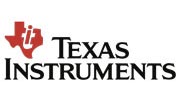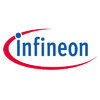
i
DIGICOMM Semiconductor
Filter interviews by
DIGICOMM Semiconductor Interview Questions and Answers
DIGICOMM Semiconductor Interview Experiences
6 interviews found
I applied via LinkedIn and was interviewed in Feb 2022. There were 2 interview rounds.

(1 Question)
- Q1. 1. What is CMOS? 2. What is latch? 3. What is the difference between latch and flip flops? 4. How to make a metastable system stable? 5. V-I characteristics of MOSFET? 6. What is pinch-off? 7. What is dyna...
- Ans.
A technical interview for Engineer Trainee covering topics such as CMOS, latch, flip flops, MOSFET, and dynamic memory.
CMOS stands for Complementary Metal-Oxide-Semiconductor and is a type of technology used in microprocessors and digital logic circuits.
A latch is a type of digital circuit that can store one bit of information.
The main difference between a latch and a flip flop is that a flip flop has a clock input and...
Interview Preparation Tips
- Digital Electronics
- Analog circuit
- Semiconductor physics
Engineer Trainee Interview Questions asked at other Companies
I applied via Approached by Company and was interviewed in Apr 2023. There were 2 interview rounds.

(8 Questions)
- Q1. What are the PD inputs and outputs
- Ans.
PD inputs are design specifications and constraints, while outputs are physical layout of the design.
Inputs include design specifications, constraints, technology libraries, and floorplan.
Outputs include physical layout, placement of components, routing of wires, and design verification.
Example: Input - RTL design, clock frequency, power constraints. Output - GDSII layout, timing analysis report.
- Q2. Describe each stage of PNR flow
- Ans.
PNR flow consists of synthesis, floorplanning, placement, clock tree synthesis, routing, and signoff stages.
Synthesis: Convert RTL code to gate-level netlist
Floorplanning: Define chip area, core, and I/O locations
Placement: Place gates in specific locations to meet timing constraints
Clock tree synthesis: Create clock distribution network
Routing: Connect gates with wires while considering timing and congestion
Signoff: V...
- Q3. What are the different techniques to minimize congestion?
- Ans.
Techniques to minimize congestion include buffer insertion, wire spreading, and layer assignment.
Buffer insertion: Adding buffers to critical paths to improve timing and reduce congestion.
Wire spreading: Distributing wires evenly to reduce congestion in specific areas.
Layer assignment: Properly assigning different signal layers to reduce congestion on a single layer.
- Q4. What is the setup and hold time and different techniques to fix the setup and hold time violations?
- Ans.
Setup and hold time are timing constraints in digital circuits. Techniques to fix violations include adjusting clock skew, buffering signals, and optimizing routing.
Setup time is the minimum amount of time a data input must be stable before the clock edge for proper operation.
Hold time is the minimum amount of time a data input must be stable after the clock edge for proper operation.
Techniques to fix setup and hold ti...
- Q5. What is signal integrity?
- Ans.
Signal integrity refers to the quality of an electrical signal as it travels through a circuit or system.
It involves ensuring that the signal remains clear and undistorted from the transmitter to the receiver.
Factors affecting signal integrity include impedance matching, noise, crosstalk, and reflections.
Signal integrity analysis is crucial in high-speed digital design to prevent data errors and ensure reliable communi...
- Q6. What is crosstalk and noise and how to fix it?
- Ans.
Crosstalk is unwanted interference between signals on adjacent lines, while noise is random unwanted signals that can degrade performance.
Crosstalk occurs when signals on adjacent lines interfere with each other due to coupling effects.
Noise is random unwanted signals that can be caused by various sources such as electromagnetic interference or power supply fluctuations.
To fix crosstalk, techniques like spacing out lin...
- Q7. What is clock latency, skew and jitter?
- Ans.
Clock latency is the delay between the clock signal being generated and reaching the destination, skew is the variation in arrival times of the clock signal at different destinations, and jitter is the variation in the period of the clock signal.
Clock latency is the delay between the clock signal being generated and reaching the destination.
Skew is the variation in arrival times of the clock signal at different destina...
- Q8. What is useful skew, negative skew and positive skew?
- Ans.
Useful skew, negative skew, and positive skew are terms used in physical design to describe timing constraints.
Useful skew refers to intentional delay added to certain paths to meet timing requirements.
Negative skew occurs when data arrives later than expected, leading to potential timing violations.
Positive skew occurs when data arrives earlier than expected, potentially causing setup time violations.
Skew can be adjus...
Interview Preparation Tips
- STATIC TIMING ANALYSIS
- Physical Design
- FORMAL VERIFICATION
- Physical Verification
Skills evaluated in this interview
Top DIGICOMM Semiconductor Physical Design Engineer Interview Questions and Answers
Physical Design Engineer Interview Questions asked at other Companies

(2 Questions)
- Q1. Regarding verification uvm
- Q2. About projects and clients
Interview Preparation Tips
Verification Engineer Interview Questions asked at other Companies

(1 Question)
- Q1. Vlsi , physics design analog layout
(1 Question)
- Q1. Physical design
Software Engineer Interview Questions asked at other Companies
DIGICOMM Semiconductor interview questions for popular designations
I applied via Campus Placement and was interviewed in Apr 2022. There were 2 interview rounds.
(1 Question)
- Q1. Question was all about digital and electronic devices
Interview Preparation Tips
Electronic devices
Digital electronics
These all subjects will help you
Graduate Engineer Trainee (Get) Interview Questions asked at other Companies
I applied via Naukri.com and was interviewed in Sep 2021. There were 3 interview rounds.
Interview Questionnaire
2 Questions
- Q1. How to decide floor plan is good Or bad in the design
- Ans.
A good floor plan should optimize area, minimize congestion, and ensure signal integrity.
Optimize area utilization
Minimize congestion and routing complexity
Ensure signal integrity and minimize noise
Consider power and thermal constraints
Ensure ease of design changes and modifications
- Q2. What are the checks your do in offer post floor plan
- Ans.
Checks after floor plan in physical design engineering
Timing analysis to ensure timing constraints are met
Power analysis to ensure power constraints are met
Signal integrity analysis to ensure signal quality
Design rule check to ensure adherence to design rules
Physical verification to ensure layout is correct
Noise analysis to ensure noise constraints are met
Interview Preparation Tips
Top DIGICOMM Semiconductor Physical Design Engineer Interview Questions and Answers
Physical Design Engineer Interview Questions asked at other Companies
Jobs at DIGICOMM Semiconductor
Top trending discussions







Interview questions from similar companies

Physical Design Engineer Interview Questions & Answers
Mirafra Technologiesposted on 1 Nov 2022
I applied via Referral and was interviewed before Nov 2021. There were 2 interview rounds.

(2 Questions)
- Q1. Interview based on EMIR ànalysis 1. Static and Dynamic Ir drop questions
- Q2. Power and signal EM questions
Interview Preparation Tips

(1 Question)
- Q1. Congestion analysis

(1 Question)
- Q1. Sdc basics TCL coding

I applied via Campus Placement and was interviewed in Aug 2024. There were 3 interview rounds.
Aotitude,core que on all subjects in ece
(2 Questions)
- Q1. INTERNSHIP EXPERIENCE
- Ans.
I completed a 6-month internship at XYZ Company where I gained hands-on experience in physical design tools and methodologies.
Worked on floorplanning, placement, and routing of digital designs
Utilized tools such as Cadence Innovus and Synopsys ICC
Collaborated with cross-functional teams to optimize design performance
- Q2. ON DSD,VLSI,ANALOG ELECTRONICS
(2 Questions)
- Q1. APTITUDE,MATH,VLSI,DSD
- Q2. VLSI (HARD QUESTION BASED ON INDUSTRY LEVEL LIKE ON CIRCUIT HE GIVES ONE SCENARIO U HAVE TO ANSWER IT)
Interview Preparation Tips
DIGICOMM Semiconductor Interview FAQs
Some of the top questions asked at the DIGICOMM Semiconductor interview -
Tell us how to improve this page.
DIGICOMM Semiconductor Interviews By Designations
- DIGICOMM Semiconductor Physical Design Engineer Interview Questions
- DIGICOMM Semiconductor Software Engineer Interview Questions
- DIGICOMM Semiconductor Verification Engineer Interview Questions
- DIGICOMM Semiconductor Graduate Engineer Trainee (Get) Interview Questions
- DIGICOMM Semiconductor Engineer Trainee Interview Questions
Interview Questions for Popular Designations
DIGICOMM Semiconductor Interview Process
based on 3 interviews
Interview experience
Interview Questions from Similar Companies
DIGICOMM Semiconductor Reviews and Ratings
based on 53 reviews
Rating in categories
Hyderabad / Secunderabad,
Bangalore / Bengaluru
5-15 Yrs
Not Disclosed
|
Physical Design Engineer
41
salaries
| ₹2.5 L/yr - ₹11.9 L/yr |
|
Analog Layout Engineer
13
salaries
| ₹1.8 L/yr - ₹8 L/yr |
|
Senior Engineer
9
salaries
| ₹8.5 L/yr - ₹23 L/yr |
|
Design & Verification Engineer
9
salaries
| ₹5 L/yr - ₹16 L/yr |
|
HR Executive
7
salaries
| ₹2.8 L/yr - ₹4 L/yr |

Apar Industries

TDK India Private Limited

Molex

Micron Technology
- Home >
- Interviews >
- DIGICOMM Semiconductor Interview Questions









